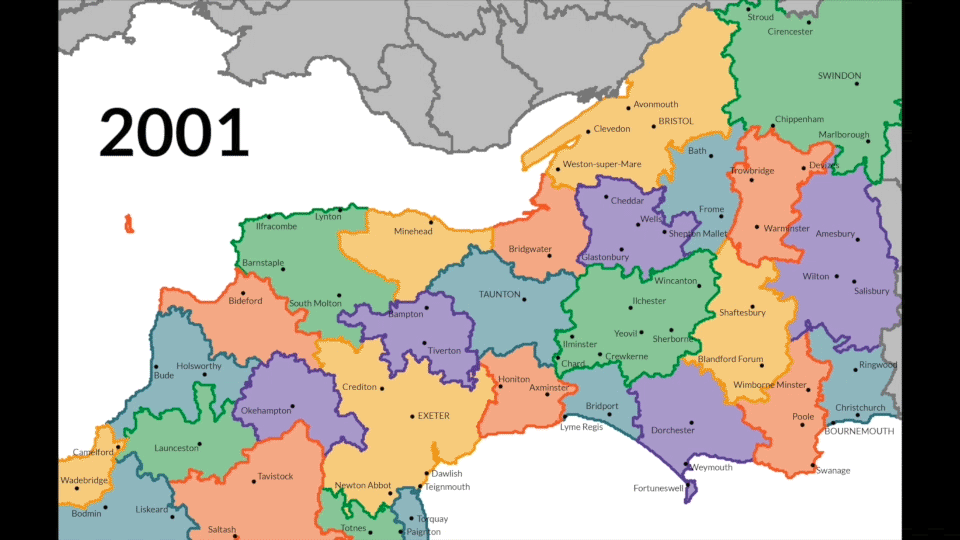This month the ONS released the latest travel to work areas (TTWAs) from the 2011 census. The results are really interesting.
For people not familiar with TTWAs, these are closest thing you get to seeing the actual boundaries of our cities – areas where the majority (at least 75%) of all commuting occurs within that area. So compared to the rather arbitrary local authority boundaries, TTWAs better reflect the push and pull of economic activity across the country.
As expected, the latest release confirmed what we knew already – people are commuting further to work now than they used to. For example, there are now only 228 TTWAs compared with 243 in 2001 and 334 in 1981. This reflects the fact that jobs are concentrating in some areas but not others, so people have to commute further to get to them. This is an issue Policy Exchange dealt with in our latest report – On the Move – and strengthens the arguments we made for cheaper and more efficient transport.
Anyhow, if you dig a little deeper you begin to see some interesting changes in the way that labour markets have changed over the last decade.
Perhaps the most notable change is in Cambridge which appears to almost have doubled its surface area in 10 years. Workers in Harlow and Bishops Stortford, for instance, have all been swallowed up by Cambridge, as shown below.
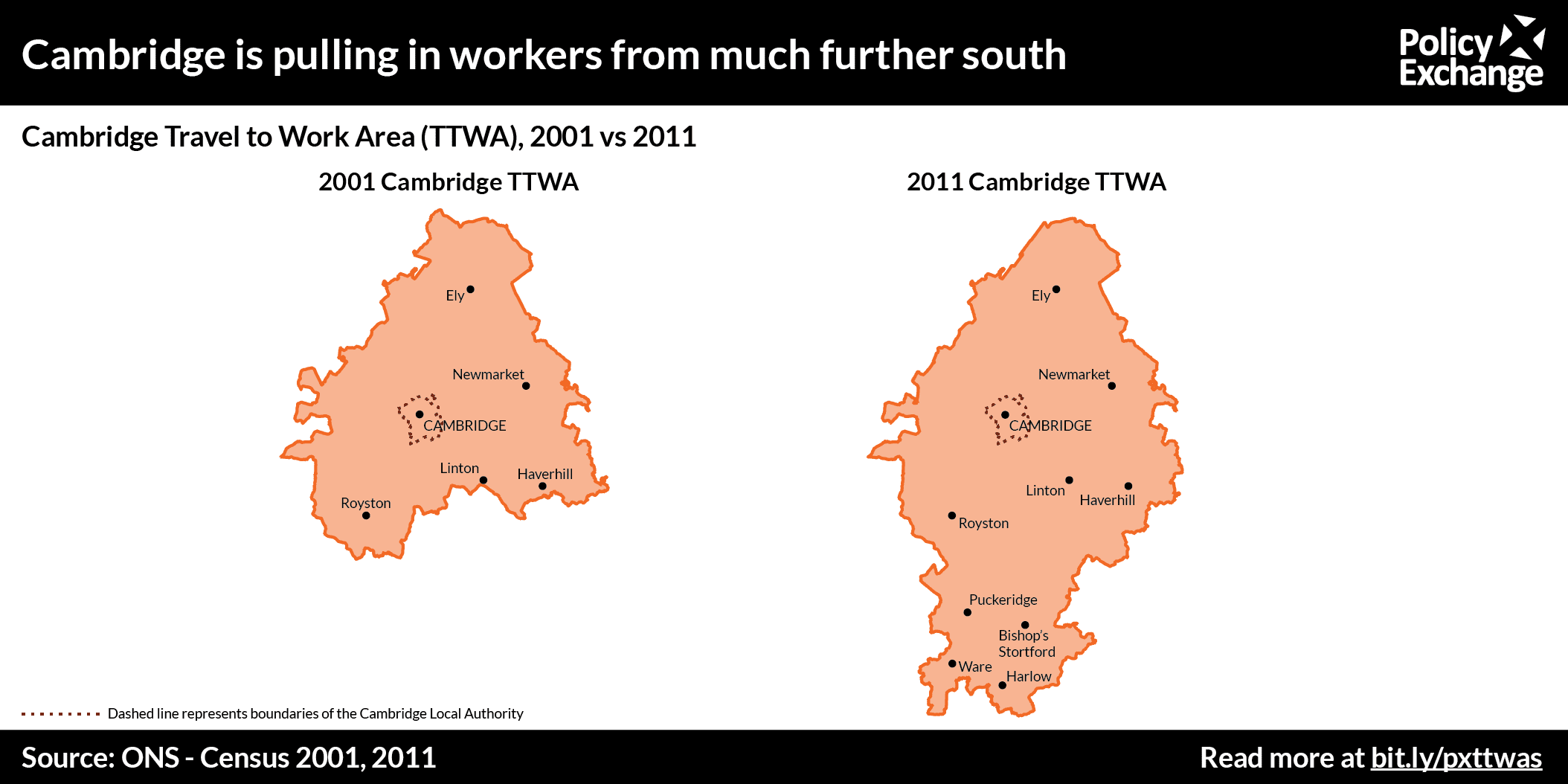
The big jump in the size of Cambridge could, ironically, be explained by the Greenbelt. A combination of expensive inner city homes and greenbelt restrictions could mean Cambridge workers have chosen to live further south in places like Puckeridge and Ware.
The magnetic pull of Manchester, the engine of the Northern Powerhouse, has grown also significantly. In 2001, the majority of workers in Bolton and Rochdale and Oldham were all commuting within the local area. Not any more.
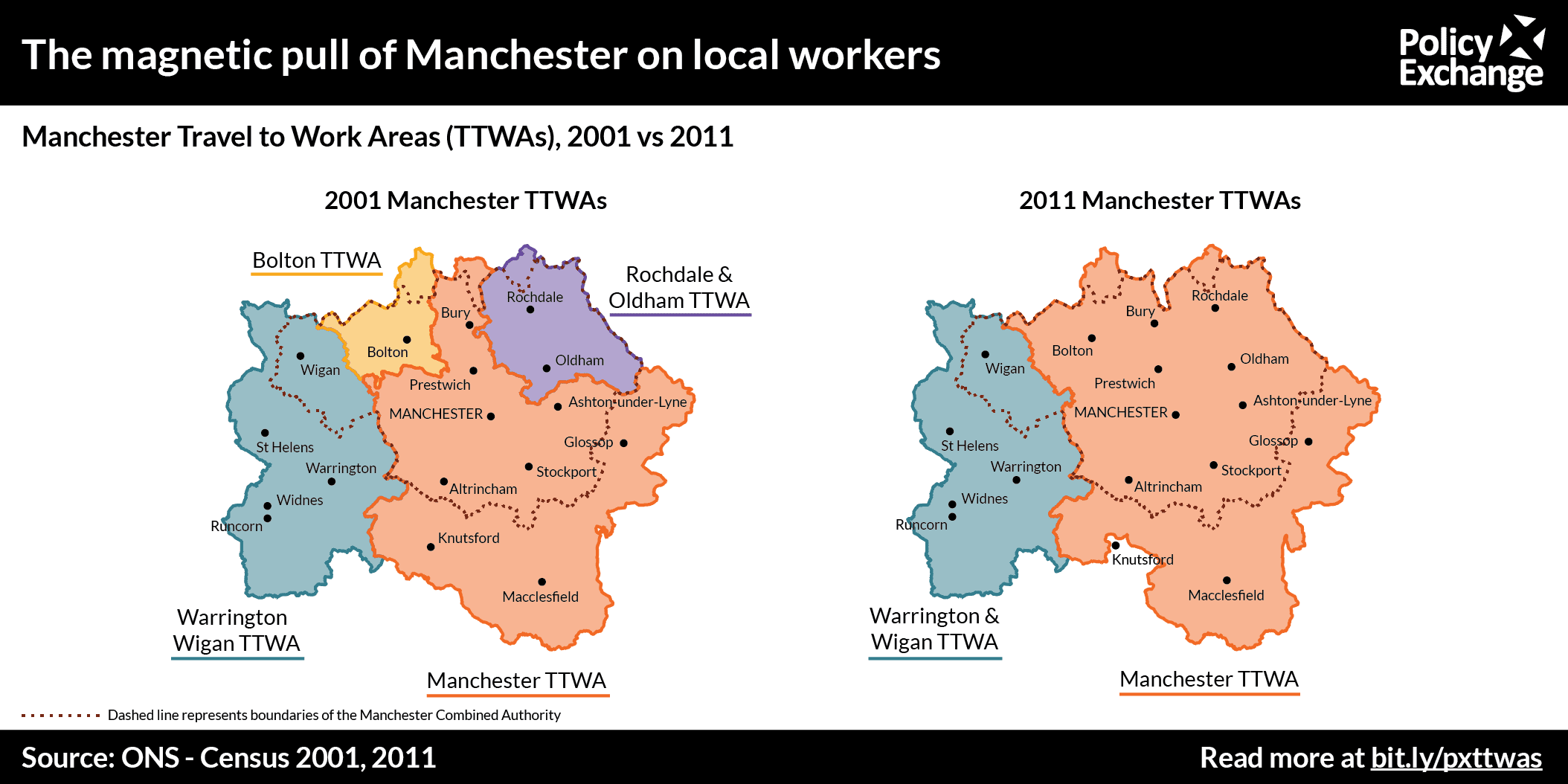
This should come as little surprise. Central Manchester has some of the best job opportunities in the North West. And you would expect the link between these areas to be only getting stronger – Manchester has created 35,000 new jobs since 2010, compared to Rochdale’s 600.
London’s TTWA has changed but not in the way you might have expected. For starters, workers in what is meant to be West London are now part of a new TTWA called Slough and Heathrow.
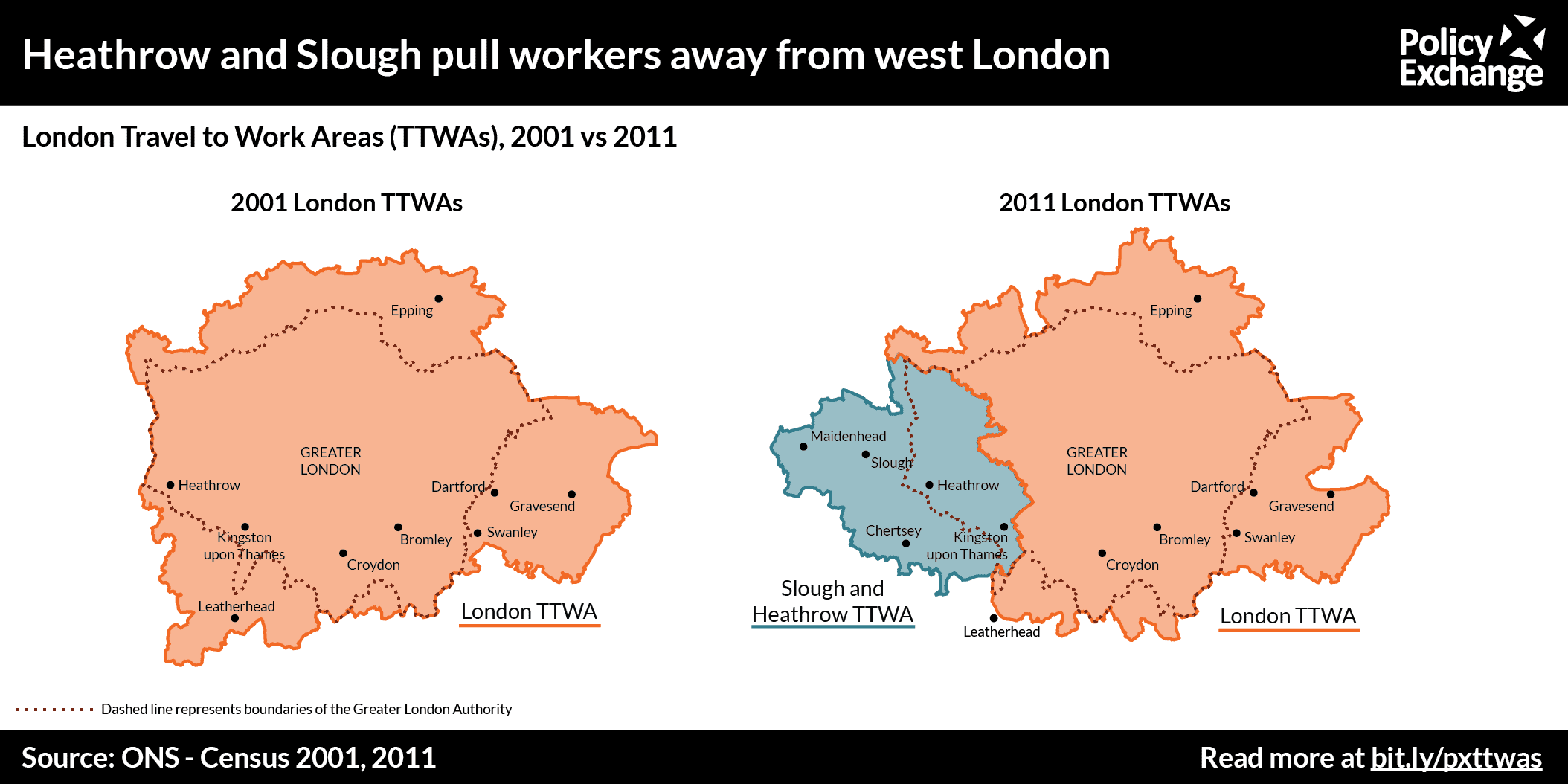
But perhaps most surprisingly, the pull of London has not extended much further into areas like Essex, Kent, or Surrey. Crawley – the fastest growing city over the last century in terms of jobs growth – has actually pinched workers and residents in Leatherhead from London. A couple of things might be behind this. One possible explanation is that more people might have decided to live and work within Greater London rather than move further out where the housing might be more affordable but the transport links are not as good. That’s another good reason to read our report as it suggests a couple of ways the Government might make rail fares in the South East more affordable.
There are of course a large number of variables which determine where people live and work like income, occupation, and lifestyle preferences. It does however reinforce the point we make in our report – that workers who can travel further are more flexible workers and therefore more employable.
For a more detailed look at the changing face of TTWAs, see our animated gifs below:
Northern Powerhouse
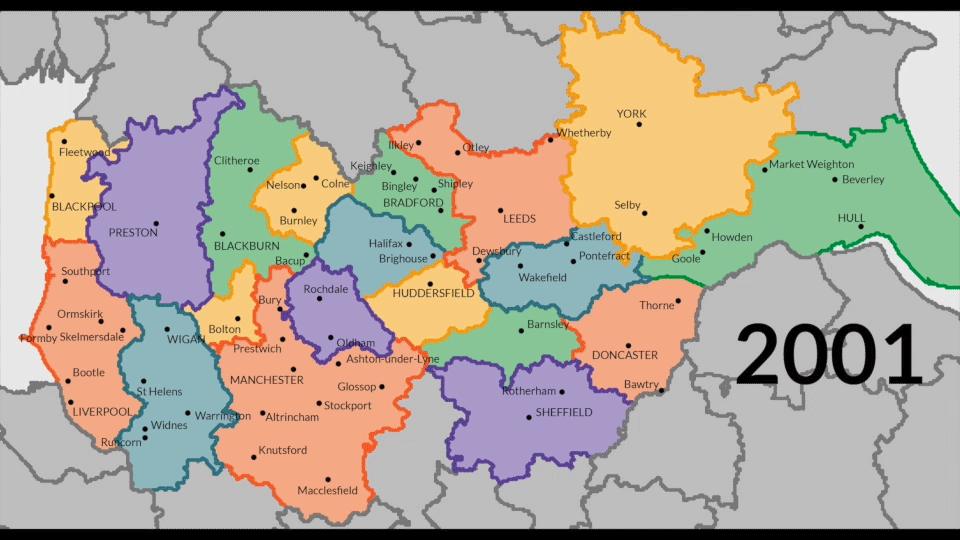
Midlands
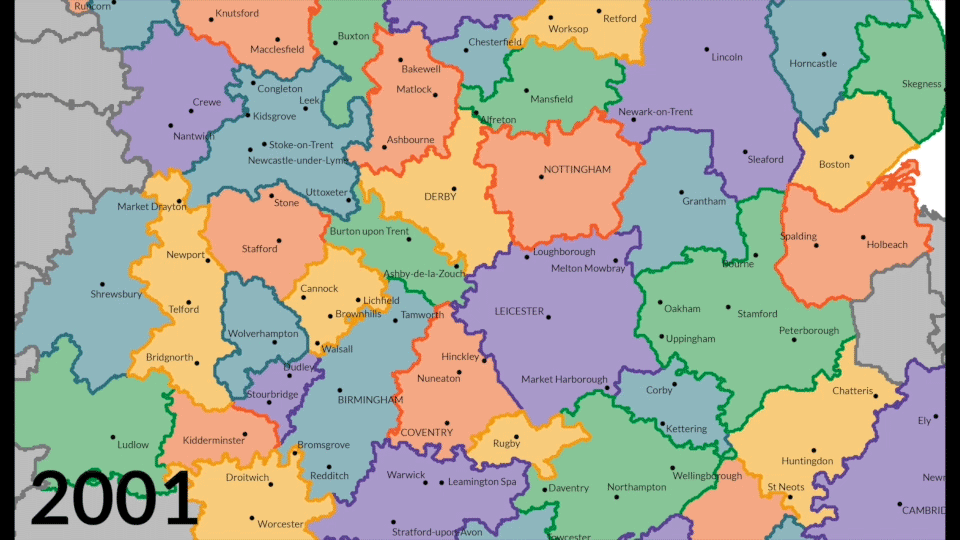
London, Cambridge and Oxford
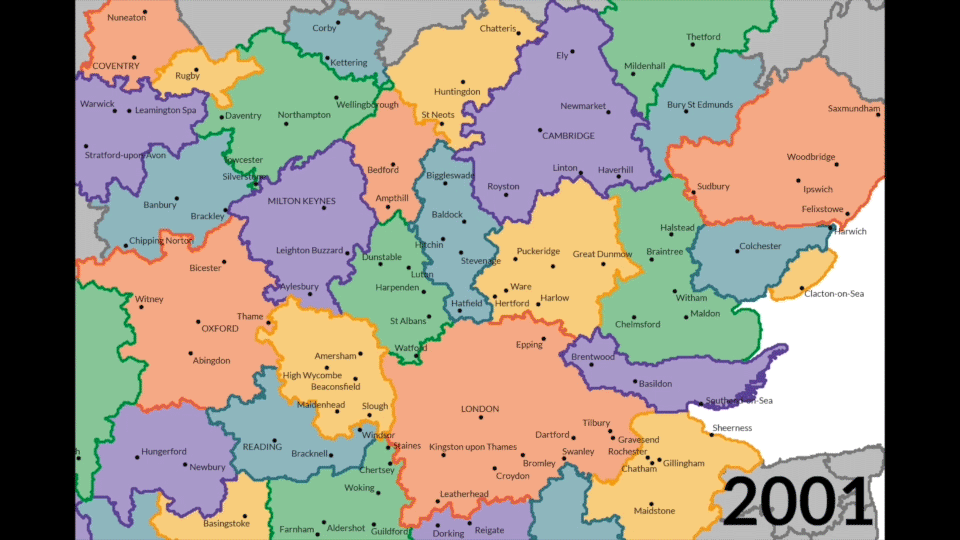
South West
